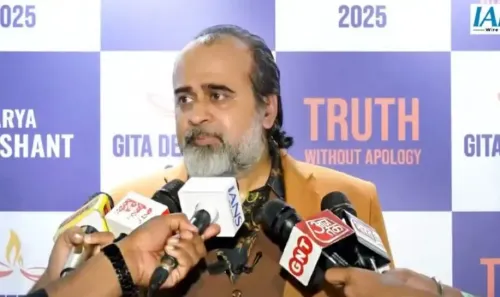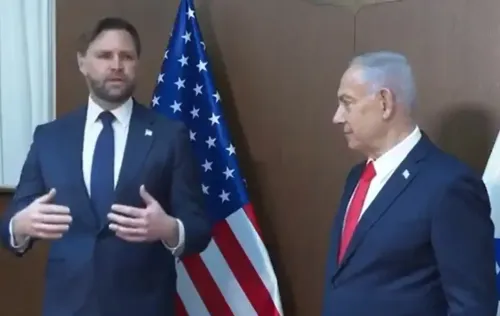Is the US Close to Finalizing a Trade Agreement with India?

Synopsis
Key Takeaways
- US and India are close to a trade agreement.
- New tariffs on several countries are set to take effect.
- Key issues include agricultural market access.
- India seeks lower US tariffs on exports.
- Trade negotiations could reshape economic relations.
Washington, July 8 (NationPress) In a pivotal moment for global trade, US President Donald Trump announced that the United States is “on the verge of securing a trade deal with India”, even as the country implements new tariffs on various nations.
During a White House briefing on Tuesday, Trump elaborated on the administration's shifting trade policies.
“We’ve reached agreements with the United Kingdom and China, and now we’re close to an agreement with India. For others we’ve contacted, it seems unlikely we'll reach a deal. Therefore, we’re just sending them a letter,” stated President Trump.
This statement coincided with the US actively sending formal notifications to key trading partners, including South Korea, Japan, Thailand, and Bangladesh, about upcoming tariff hikes scheduled for August 1.
These notifications signify the start of what the administration describes as a comprehensive reassessment of trade ties to create a more equitable environment for American producers.
“We’re dispatching letters to various countries indicating their respective tariff obligations. Some adjustments may occur if justified, but we intend to maintain fairness,” Trump continued.
The US-India trade discussions have gained traction recently, with negotiators from both nations striving to finalize a limited agreement that focuses on reducing tariffs. However, significant challenges persist, particularly concerning market access to India’s agricultural and dairy sectors. These sectors are politically sensitive in India, where agriculture supports nearly half of the population, despite contributing only 16 percent to the economy.
Fears surrounding food safety and the livelihoods of rural communities have made New Delhi hesitant to liberalize these sectors, aligning with its strategy of excluding agriculture from most free trade agreements.
In exchange, India is advocating for reduced US tariffs on its labor-intensive exports, such as leather products, clothing, and footwear—industries crucial for millions of jobs in the country.









